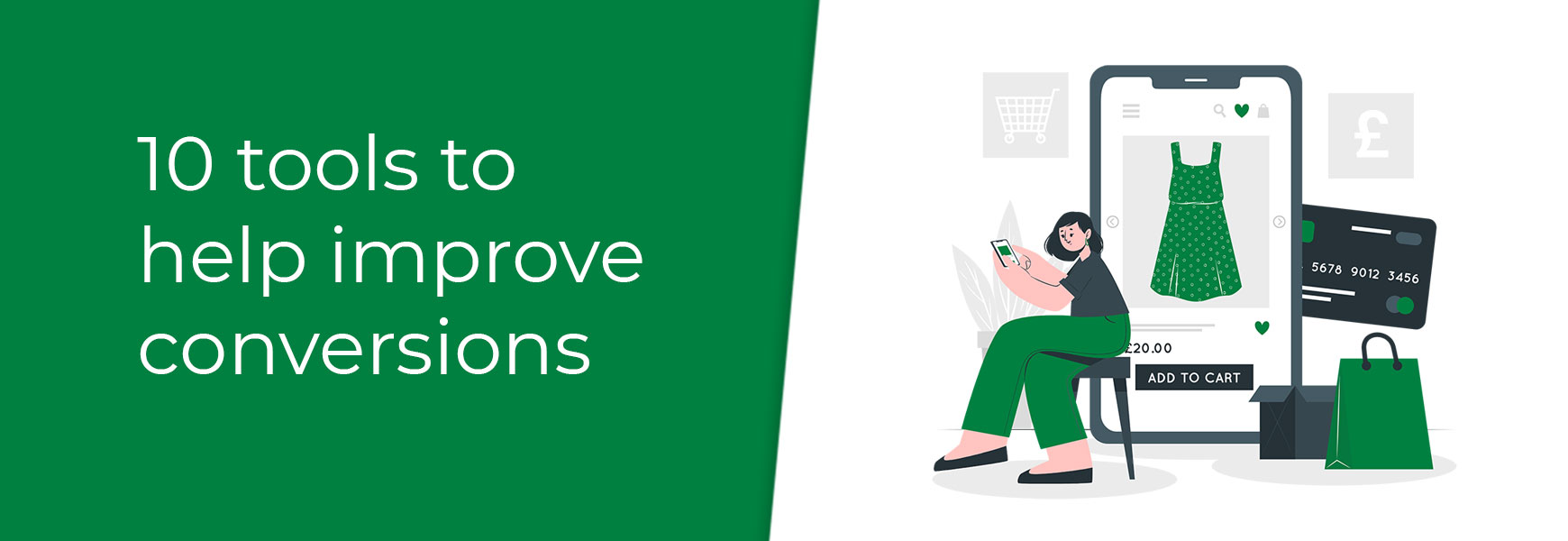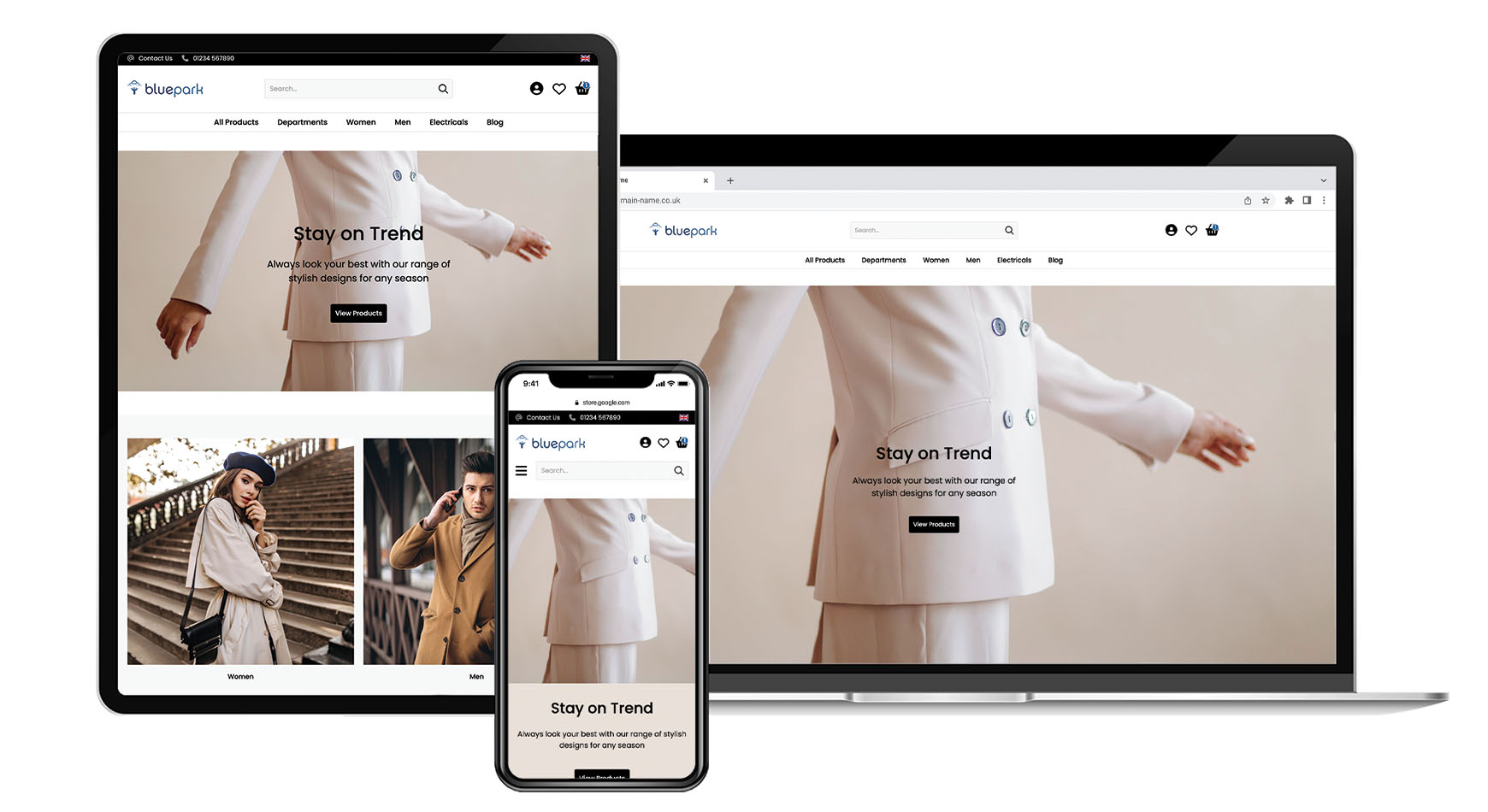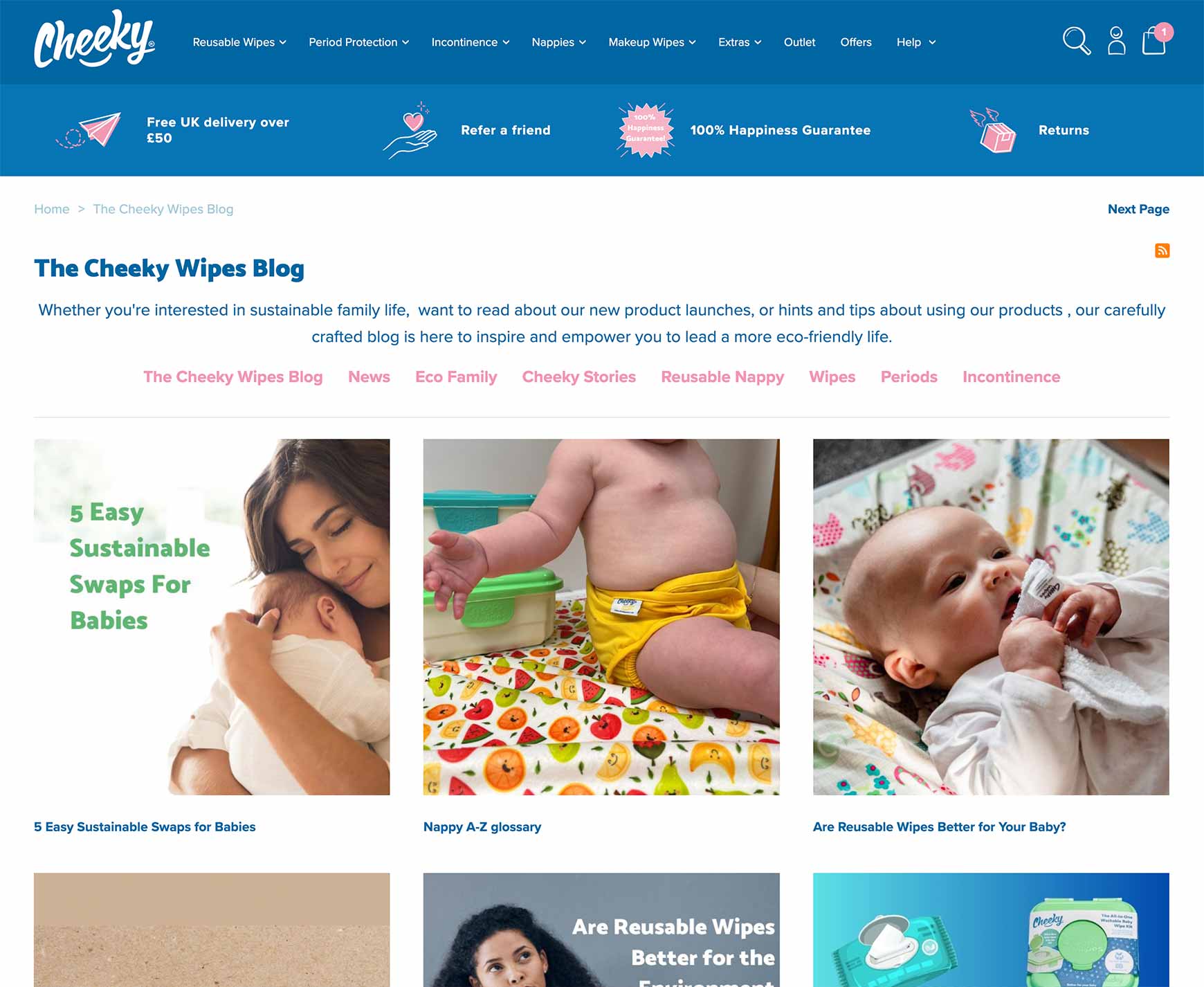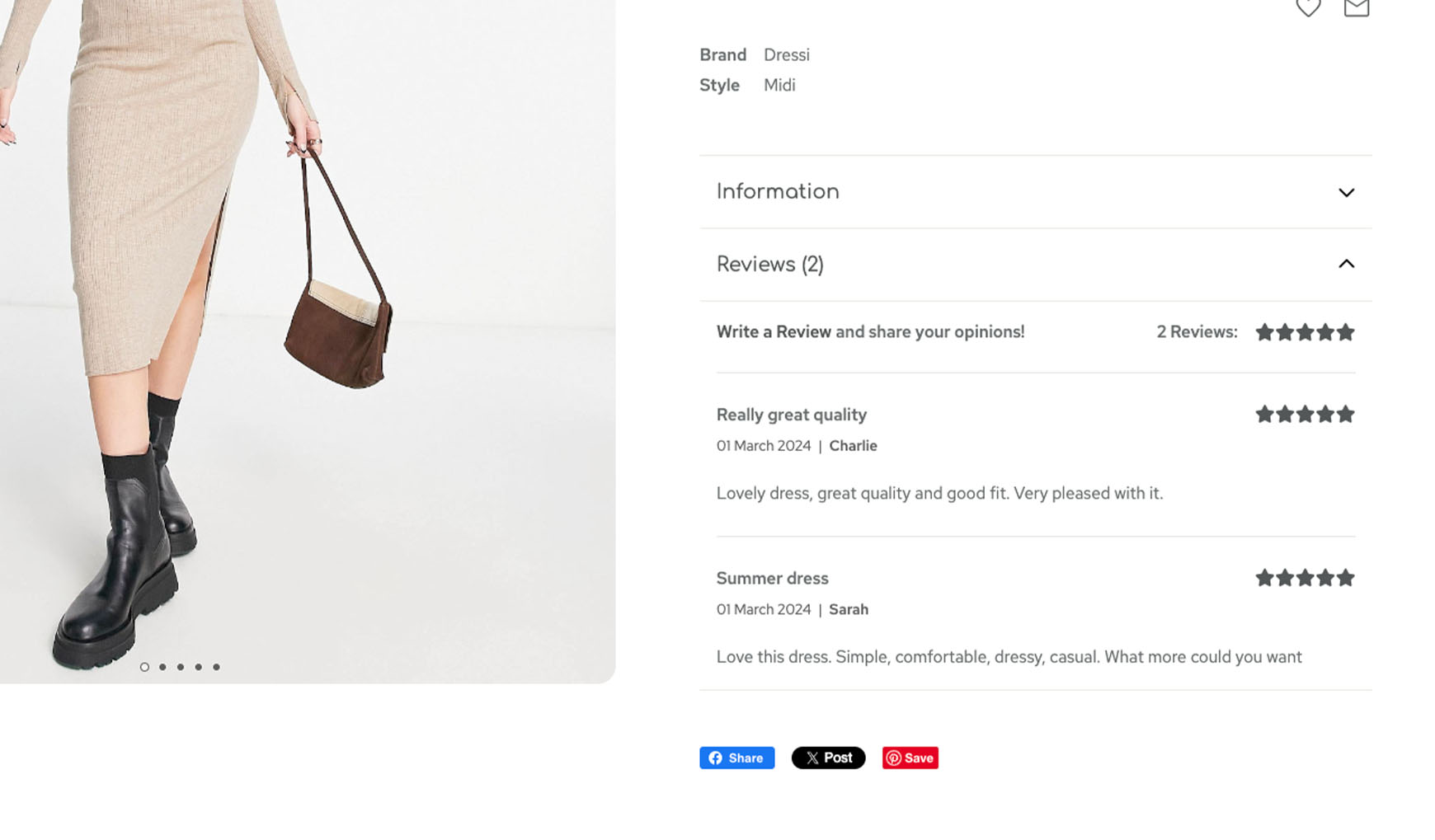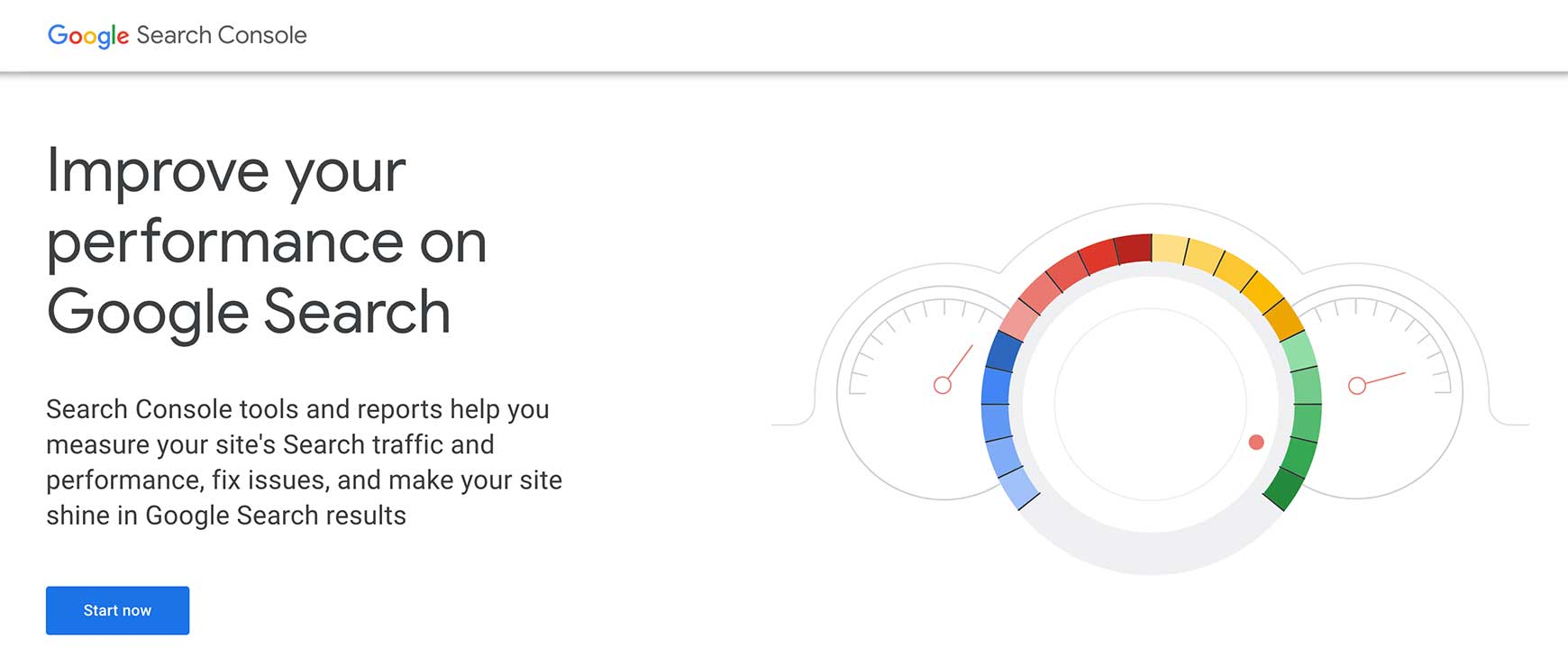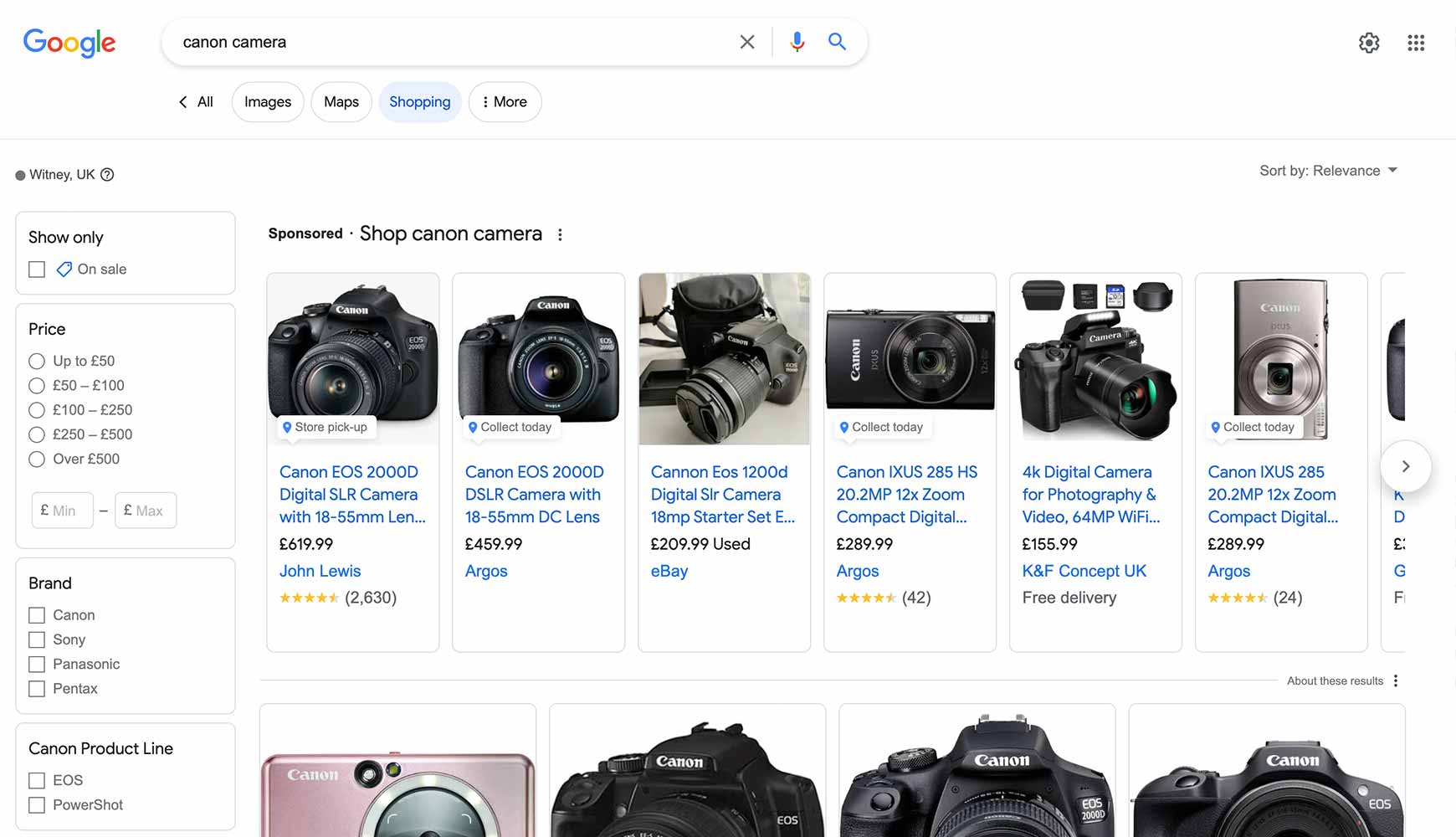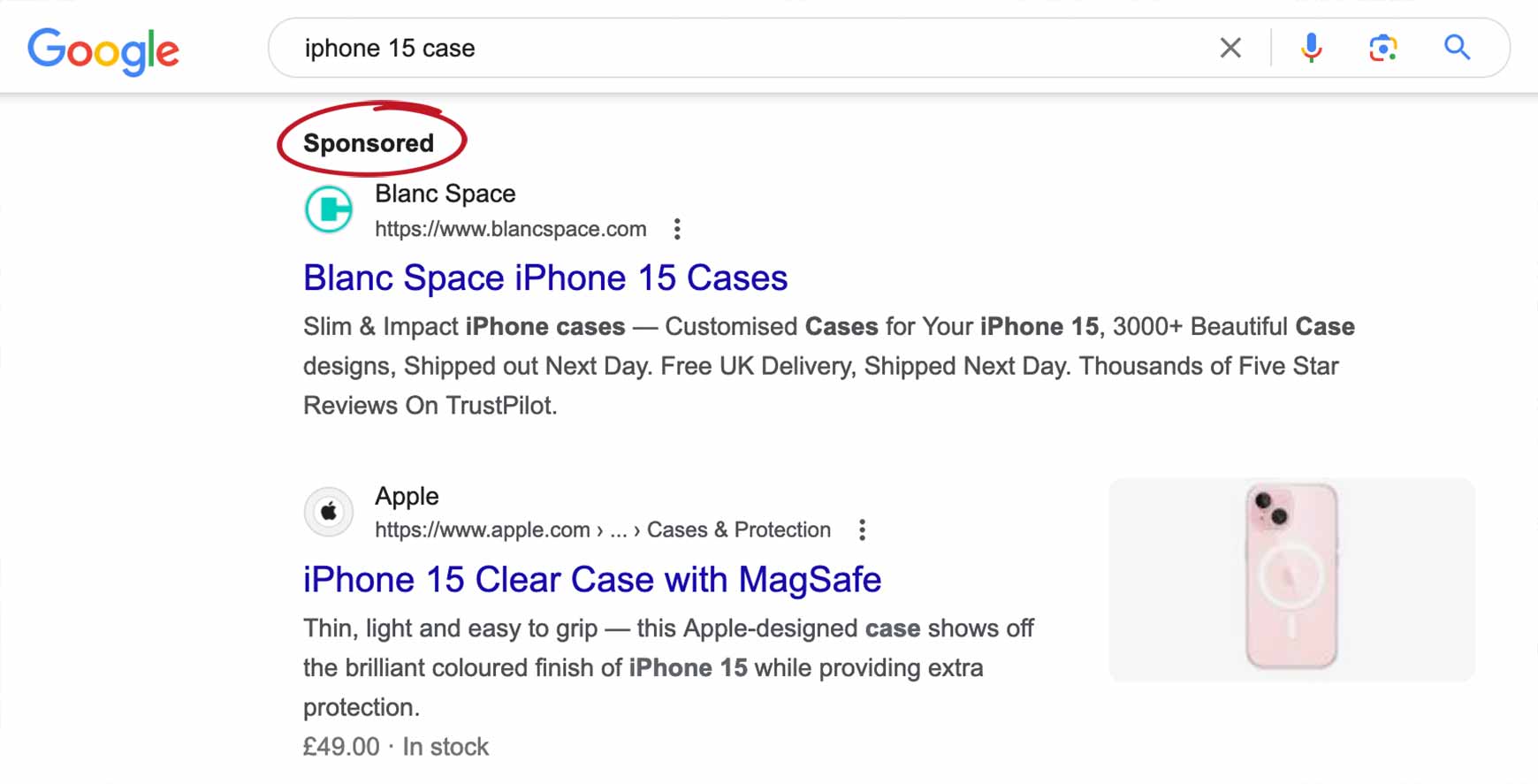Following on from our previous post, 10 things you can do on your website to improve conversions, we've put together ten services available either within Bluepark (some features are dependent on which package you are on) or elsewhere on the internet. All of which can then lead to an increase in conversions on your online shop. Mobile-friendly websiteDid you know, according to Google, if your site isn't mobile-friendly visitors are 5 times more likely to leave? That means that if you don't have your site optimised for mobile you could end up loosing a huge proportion of visitors to competitors. Having a mobile-friendly website is also important for SEO. This is because Google predominantly uses the mobile version of your site's content for indexing and ranking within its search results. This is called mobile-first indexing.
All Bluepark V2 themes are optimised for mobile, ensuring content is styled in a way that's easy to navigate and call-to-actions stand out. Their base code (the stuff you don't see!) is also designed according to Google best practices. As you're building your site it is important to keep in mind that both visitors and Google take page load speed into consideration, therefore, it is imperative that all of your images are optimised too. Remember, the higher the file size, the slower they will load. TIP: For tips on mobile-friendly best practices have a read of our post Mobile web design best practices. Have a read of our Best practices for website photos and product images guide for more advice on optimising your images. Email NewslettersOnce you have a small database of customers, you can start sending out regular email newsletters to update them with new products, latest offers and any news. This is a great way to engage with your customers and keep them interested. You will find that some customers begin to order from you more than once and become loyal customers. These customers are invaluable, so always keep them happy! 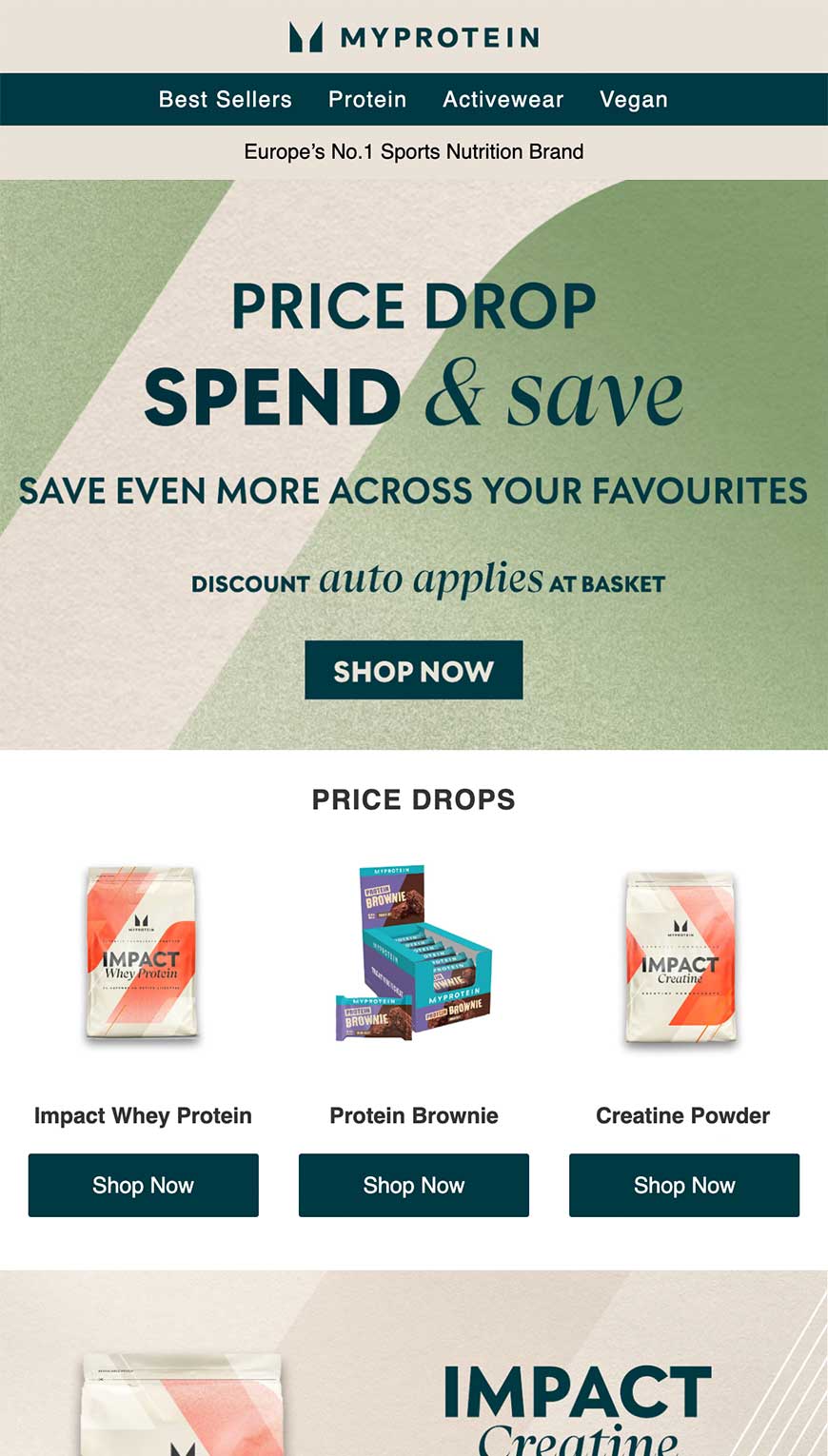 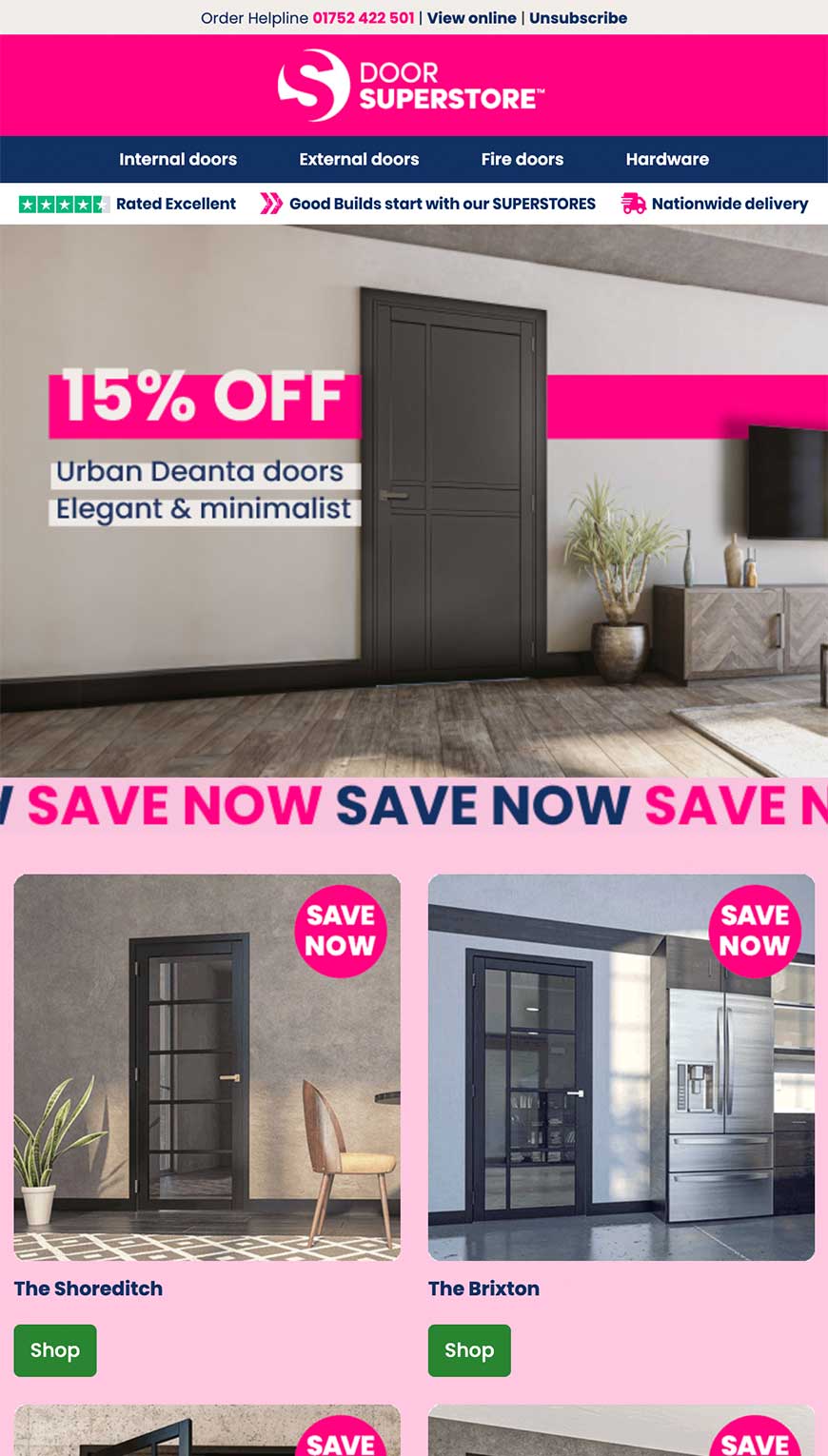 If you have a Business or Enterprise package on Bluepark, you will find the email newsletters feature in the Marketing menu where you can create and send out 100,000 emails per month at no extra cost. Alternatively, you can use an advanced email marketing platform, such as Klaviyo, which is already integrated with Bluepark, to take your marketing to the next level. TIP: Explore our How to create an email wrapper for brand consistency on your Bluepark site and then have a read of our post Ten Tips for improving your email newsletters to make sure your email newsletters are successful. BlogOne thing Google loves on any website is unique, quality driven, regularly updated content. Along with adding new products and information pages, the best thing you can do to make sure you achieve this is by having a blog on your shop's domain that you post to on a regular basis. Each post needs to be over 300 words long to make sure Google doesn't label it as "thin" content as this can harm your site, not help it.
Every Bluepark site comes with its own blog built in so there is no need to set one up elsewhere. This means that your blog will already be integrated into your website and will sit on your domain. These are both things that Google likes and it will help more traffic come to your online shop. TIP: Before you start writing your first post have a read of our How to make your blog a success guide which will help to make sure you get the most out of your blog. And if you're struggling for ideas for what to write, check out our 25 killer ideas for content rich blog posts on an ecommerce website article. SSL CertificateGoogle is on a mission to make the internet as secure as possible. As a result, they are now giving priority to websites that have an SSL certificate applied to every page. Bluepark now provides a free SSL Certificate for all packages. ReviewsThere are two types of reviews you can add to your online shop, product reviews and service reviews. Product reviews allow your customers to review a product they have purchased and have it appear on your product page for other customers to read. This gives them genuine information about how something performs in a real world environment. These reviews can appear on Google underneath the individual product page listings.
Service reviews are where customers who have purchased from you rate your level of service. These are extremely beneficial if you offer a good service because potential customers who have never purchased from you will be reassured that their order will be handled efficiently. Service Reviews are often done using a trusted external reviews services, such as TrustPilot or Feefo. These ratings can appear within your Google Adwords and organic listings for your homepage. TIP: Our post Optimising product reviews and why they are important! will help you get the most out of the product reviews feature on Bluepark's Business and Enterprise packages. Social Media
One area you can't afford to ignore is social media. Use platforms such as Facebook, X (formerly known as Twitter), Instagram and TikTok to interact with potential customers you normally wouldn't be able to reach. Share news and updates about your brand, launch new products or services, give them a look behind the scenes, and remember always include engaging images to get their attention. You can also setup shops on Facebook and Instagram using Bluepark's integration to promote your products on your posts and encourage followers to purchase. Connect your Bluepark online shop to a channel manager, such as Linnworks, and sell on TikTok or create your own product feed in Bluepark. TIP: Follow our How to add social share buttons to your website, How to link your website to your social profiles and How to add social widgets to your website guides to make sure you enable your online shop to interact with your social media profiles. Google Search ConsoleTo ensure Google knows you exist, you need to connect your website to Google Search Console. Once this is done, Google will be able to crawl and index your pages within its search results. You will also be able to see all sorts of data Google keeps track of on your site, such as which search queries people are using, which sites are linking to yours, and which pages on your sites are linked to the most.
Google Search Console also alerts you to any issues on your website, such as duplicate meta content, pages that Google is unable to index, and any missing product data. You will also be informed of any pages that Google has previously indexed, but can no longer access, and these will be flagged up as 404 errors. Please be aware, however, that the word 'error' is very misleading, as 404s will not harm your SEO. These are URLs that no longer exist on your site and will occur when a page, product or category has been set to inactive or deleted, or when the URL of these has been changed without creating a 301 redirect. The 404 code they produce then tells Google that they no longer exist, so they are doing their job as intended. TIP: Follow our step-by-step guide on Linking your online shop to Google Search Console. Google ShoppingCreating product listing ads for Google Shopping allows your products to be seen Google Shopping listings, both within the main search results and within Google Shopping itself. This means your products will get much more exposure than just relying on Google picking them up from your website and, as they include an image, they are more prominent when displayed within search results, so they are more likely to be clicked on.
To be able to list your products you must include certain data within your product feeds such as its brand, part number and barcode. Without the mandatory data Google will not accept the products and they will not be shown. You will also need to have a Google Merchant Center account where the product feed is imported into and a Google Adwords account where you will manage your ads and campaigns, including where you want to target them and what your budget is. TIP: Use our How to enable your products to be listed on Google Shopping and How to submit your product feed to Google Shopping guides to make sure your products are added to Google Shopping correctly. Google AdwordsEven if you optimise your site as best as you can for Google, a brand new online shop will take a while to show up in search results and start to attract customers. However, you can use Google Adwords as soon as your site is live to make sure it gets in front of people straight away when looking at relevant products or services. You may even appear higher on the page than the big boys such as John Lewis and Amazon.
Like Google Shopping, Adwords is a paid service and will need constant managing, so this isn't a quick fix, but it can get you seen by people who wouldn't otherwise find your website. If you're unsure of where to start, look at which words and phrases your competitors are bidding on and use these as a basis for your own campaigns. It is always good to focus on a small set of generic terms that are relevant to your products to start with and then see which ones work best for you and adjust your budgets and maximum cost per click rates accordingly. TIP: Use Google Trends to find out which keywords or phrases are popular and which ones are rising or falling in popularity. This can help determine whether you focus on a particular phrase or not. The InternetThis is a rather obvious online service many people do have a tendency to overlook. The internet has an enormous wealth of information just waiting to be discovered and there are so many resources you can tap into relating to selling online, marketing and customer service. Be proactive, if you're not sure about something search for someone who does know.
Sites like HubSpot's Marketing Blog and HootSuite's Social Media Marketing Blog have so many in-depth articles you can read, such as 10 Benefits of Consistent, High-Quality Content Marketing and A Beginner-Friendly Guide to Google Ads, so you are bound to find something that can help you to improve your website and your customers' experience. TIP: Bluepark's official blog has lots of information about selling online, as well as how-to guides and information on our latest features, so make sure you check back regularly. Also, our latest updates page will keep you informed of every single update we make to help you to improve your business. Try Bluepark for FREE for 14 daysFull access to everything including our support team, no card details required |
|
|

